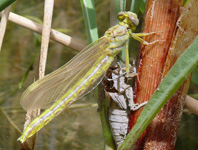Abstract
Troglobitic species are those organisms restricted to caves that frequently present unique morphological features related to these environments. In order to study its ecology, evolution and biogeography, it is first required to properly recognize them. However, especially in Brazil, the basic knowledge is still incipient, with few taxonomic studies such as identification keys for this group of organisms. In addition, since the troglobitic species belong to different taxonomic groups, the information to properly recognize them is often sparse and difficult to access. Considering this, an interactive multi entry taxonomic key available online is an interesting approach, as it makes identifications easier. This study aims to construct a multi-access interactive identification key to the troglobitic invertebrates of Brazil, using morphological characters obtained from literature and direct observations of specimens. The key was made in Lucid version 3.3, containing figures of most characters. It comprises seventy-eight species of troglobitic invertebrates that occur in Brazil, forming a matrix of 231 morphological characters and more than 200 images to support identification. The key is freely available online on lucid central (http://keys.lucidcentral.org/keys/v3/troglobitic_invertebrates/troglobitic_invertebrates.html). Since Brazilian laws regarding cave conservation has change in 2008, allowing even the destruction of caves, this multi-access identification key is step to reduce the existing taxonomic impediment and also an important tool for identification of troglobites, especially for non-specialists.
References
Agrain, F.A. (2014) An interactive multi-entry to the species of Megalostomis Chevrolet, with descriptions of a new species from Paraguay (Chrysomelidae, Cryptocephalinae). ZooKeys, 425, 59–69.
https://doi.org/10.3897/zookeys.425.7631
Begum, M.M., Dalisay, T.U. & Cumagun, C.J.R. (2012) Taxonomic Review of and Development of a Lucid Key for Philippine Cercosporoids and Related Fungi. Plant Pathology. [published online]
https://doi.org/10.5772/30214
Bittrich, V., Souza, C.S.D., Coelho, R.L.G., Martins, M.V., Hopkins, M.J.G. & Amaral, M.C.E. (2012) An interactive key (Lucid) for the identifying of the genera of seed plants from the Ducke Reserve, Manaus, Amazonas, Brazil. Rodriguésia, 63 (1), 55–64.
https://doi.org/10.1590/S2175-78602012000100005
Bonato, L., Minelli, A., Lopresti, M. & Cerreti, P. (2014) ChiloKey, an interactive identification tool for the geophilomorph centipedes of Europe (Chilopoda, Geophilomorpha). ZooKeys, 443, 1–9.
https://doi.org/10.3897/zookeys.443.7530
Buffington, M.L. & Noort, S. Van (2012) Revision of the Afrotropical Obertthuerellinae (Cynipoidea, Liopteridae). ZooKeys, 202, 1–154.
https://doi.org/10.3897/zookeys.202.2136
Constantino, R. (2002) An illustrated key to Neotropical termite genera (Insecta: Isoptera) based primarily on soldiers. Zootaxa, 67 (1), 1–40.
https://doi.org/10.11646/zootaxa.67.1.1
Dallwitz, M.J., Paine, T.A. & Zurcher, E.J. (2013) Principles of Interactive Keys. Available from: http://delta-intkey.com/www/interactivekeys.pdf (accessed 20 March 2017)
Doorenweerd, C., Van Haren, M.M., Schermer, M., Pieterse, S. & Nieukerken, E.J. (2014) A Linnaeus NGTM interactive key to the Lithocolletinae of North-West Europe aimed at accelerating the accumulation of reliable biodiversity data (Lepidoptera, Gracillariidae). ZooKeys, 422, 87–101.
https://doi.org/10.3897/zookeys.422.7446
Drinkwater, R.E. (2009) Insights into the development of online plant identification keys based on literature review: an exemplar electronic key to Australian Drosera. BioscienceHorizons, 2 (1), 90–96.
https://doi.org/10.1093/biohorizons/hzp007
Farache, F.H.A. & Rasplus, J.-Y. (2014) Revision of the Australasian genus Pseudidarnes Girault, 1927 (Hymenoptera, Agaonidae, Sycophagine). ZooKeys, 404, 31–70.
https://doi.org/10.3897/zookeys.404.7204
Holsinger, R. & Culver, D.C. (1988) Invertebrate cave fauna of Virginia and part of eastern Tennessee: Zoogeography and Ecology. North Carolina State Museum of Natural Sciences, U.S.A., pp. 1–162.
Howarth, F.G. (1983) Ecology of cave arthropods. Annual Review of Entomology, 28, 365–389.
https://doi.org/10.1146/annurev.en.28.010183.002053
ICMBio (2015) Instituto Chico Mendes de Conservação da Biodiversidade, Ministério do Meio Ambiente, Brasília – DF. Available from: http://www.icmbio.gov.br/portal/biodiversidade/fauna-brasileira/lista-de-especies.html?start=350 (accessed 23 March 2017)
Knapp, S., Polaszek, A. & Watson, M. (2007) Spreading the word. Nature, 446, 261–262.
https://doi.org/10.1038/446261a
Lucidcentral (2017) Lucidcentral.org. Available from: http://www.lucidcentral.com (accessed 21 March 2017)
Norton, G.A. (2000) Multi-media keys for identification and diagnostics: the Lucid experience. International Workshop of the Asia-Pacific Advanced Network (APAN) and its Applications, 27–30.
Penev, L., Sharkey, M., Erwin, T., van Noort, S., Buffington, M., Seltmann, K., Johnson, N., Matt, T., Thompson, C.F. & Dallwitz, M.J. (2009) Data publication and dissemination of interactive keys under the open access model. ZooKeys, 21, 1–17.
https://doi.org/10.3897/zookeys.21.274
Racovitza, E.G. (1907) Essai sur les problèmes biospéologiques. Archives de Zoologie Expérimentale et Générale, 4, 371–488.
Ristaino, J.B. (2012) A Lucid Key to the Common Species of Phytophthora. Plant disease, 96 (6), 897–903.
https://doi.org/10.1094/PDIS-08-11-0636
Rousse, P., Noort, S. van & Diller, E. (2013) Revision of the Afrotropical Phaeogenini (Ichneumonidae, Ichneumoninae), with description of a new genus and twelve new species. ZooKeys, 354, 1–85.
https://doi.org/10.3897/zookeys.354.5968
Sharratt, N.J., Picker, M.D. & Samways, M.J. (2000) The invertebrate fauna of the sandstone of the caves of the Cape Peninsula (South Africa): patterns of endemism and conservation priorities. Biodiversity and Conservation, 9 (1), 107–143.
https://doi.org/10.1023/A:1008968518058
Trajano, E. & Bichuette, M.E. (2010) Diversity of Brazilian subterranean invertebrates, with a list of troglomorphic taxa. Subterranean Biology, 7, 1–16.
Virgilio, M., White, I. & Meyer, M. De (2014) A set of multi-entry identification keys to African frugivorous flies (Diptera, Tephritidae). ZooKeys, 428, 97–108.
https://doi.org/10.3897/zookeys.428.7366

